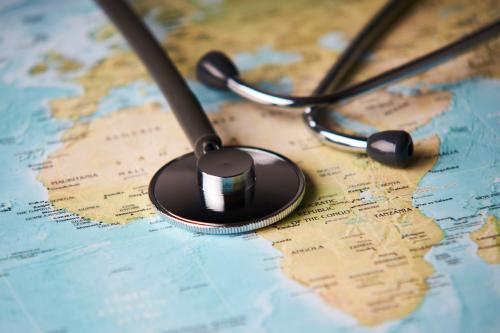Not many in the general public are aware of this, but today is the International Day for Disaster Reduction. This initiative deserves to be more widely known as the principles on which it is based are both revolutionary and common sense. Rather than accepting that natural disasters – earthquakes, hurricanes, tsunamis, mudslides, drought – will inevitably cause casualties, disaster risk reduction starts from the premise that local communities and governments can indeed take measures to reduce death, destruction and other negative effects of disasters.
We know that the number of natural disasters is increasing. According to the International Strategy for Disaster Risk Reduction, the number of natural disasters has increased from 588 in 1960 – 1969 to 2,788 in 2000 – 2005 alone with hydrometerological disasters (floods, storms, droughts) increasing the most in absolute figures. In the last 20 years, more than 200 million people have been affected each year by disasters. While international attention focuses on the dead, the wounded and the destruction of houses and infrastructure, the fate of surviving victims often tends to be forgotten. Many disasters force people to leave their communities and while there is typically an outpouring of support during the initial days of high visibility disasters, media coverage and assistance decreases as time goes on. Many of the displaced are unable to go home or to find other solutions – sometimes for years. Sometimes for decades.
We don’t yet know the global impact of climate change on the frequency and severity of natural disasters. But it seems likely that natural disasters will further increase, and that there will be further displacement of hundreds of thousands and millions of women, men and children. Measures to reduce the risk of natural disasters are both important and feasible. The Hyogo Framework for Action lays out a comprehensive 10-year plan to reduce the risk of disasters, beginning with ensuring that disaster risk reduction is a national and a local priority and spelling out practical measures that can be taken by local communities, governments, and regional and international organizations. Reducing the risk of disasters is something that can and should be done in all regions of the world.
There are many successful examples. Following the devastating 2001 earthquake in Gujarat, India, an initiative by the Sustainable Environment and Ecological Development Society (SEEDS) initiated a training program for masons in earthquake-resistant construction. Over the years, the SEEDS Mason Association has expanded to 800 members who are now serving their local communities. In southern Malawi, flooding from the Mthumba River disrupted agricultural production, destroyed buildings and killed people. A local NGO, “Eagles,” working with local government authorities, came up with a plan to design an earthen dike that would re-instate the previous river course of the Mthumba River and reduce the impact of flooding on a wide area. The impact of the project was felt immediately: a significant reduction of flooding in prime agricultural lands, reduced water-borne diseases and increased school attendance.
Even with the best plans in the world, however, natural disaster will continue to affect people in all regions for the foreseeable future. In exercising my mandate, I have been particularly concerned about the human rights of those displaced by natural disasters. Too often the victims of natural disasters encounter unequal access or discrimination in aid, forced relocation, sexual and gender-based violence or other human rights violations. These usually aren’t the result of intentional actions, but rather the product of inadequate planning and disaster preparedness. Where authorities allow to build in high risk areas, where protective shelters or evacuation plans are discriminatory, insufficient or non-existent or where no measures are taken to keep records of property titles in a safe place, victims who could be saved will die and surviving members of minorities, widows or the poor in general will risk to be unable to recover their property. Thus, international human rights law arguably obliges states to take preventive measures to reduce the impact of natural disasters. To provide rights based guidance to humanitarian organizations in their disaster response, I prepared draft Operational Guidelines on Human Rights and Natural Disasters which were formally adopted by the UN’s Inter-Agency Standing Committee Working Group last year. These not only provide specific recommendations on measures that can be taken in all phases of humanitarian response to uphold the human rights of those affected by events beyond their control but also outline steps to mitigate risks before disasters hit.
Persons threatened or affected by natural disasters should enjoy the same rights and freedoms under human rights law as others in their country. But too often they are not. As we mark the International Day for Disaster Reduction, it is important to work both to reduce the human costs of natural disasters and to ensure that the human rights of those who are affected, including the displaced, are upheld.



Commentary
Op-edNatural Disasters: Reducing Risks, Upholding Rights
October 10, 2007